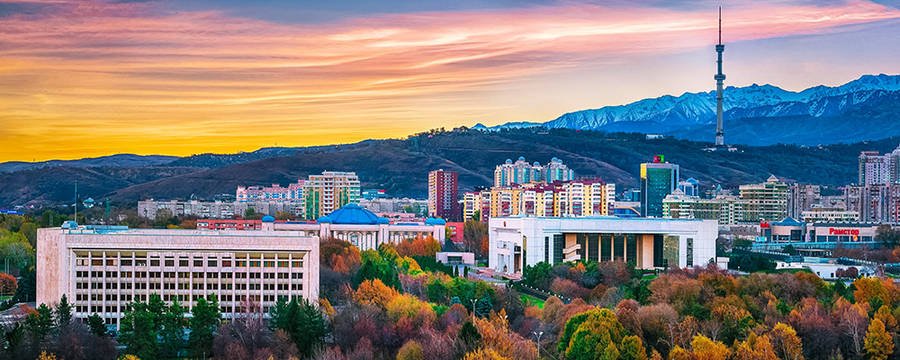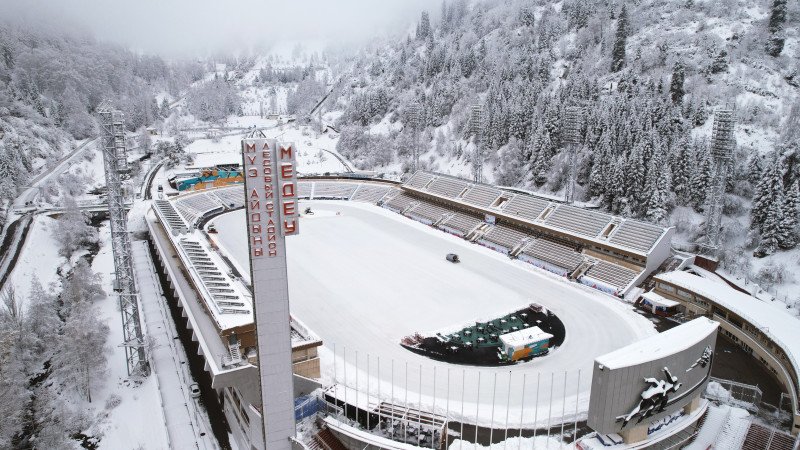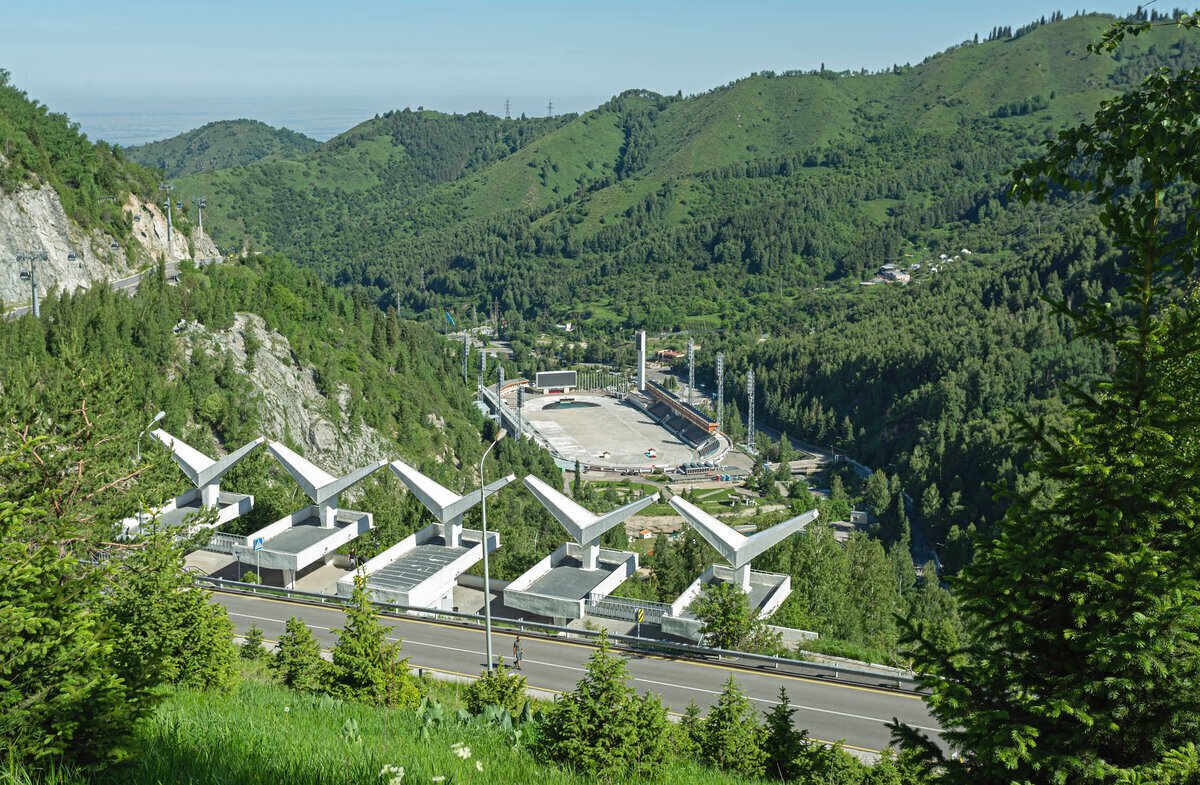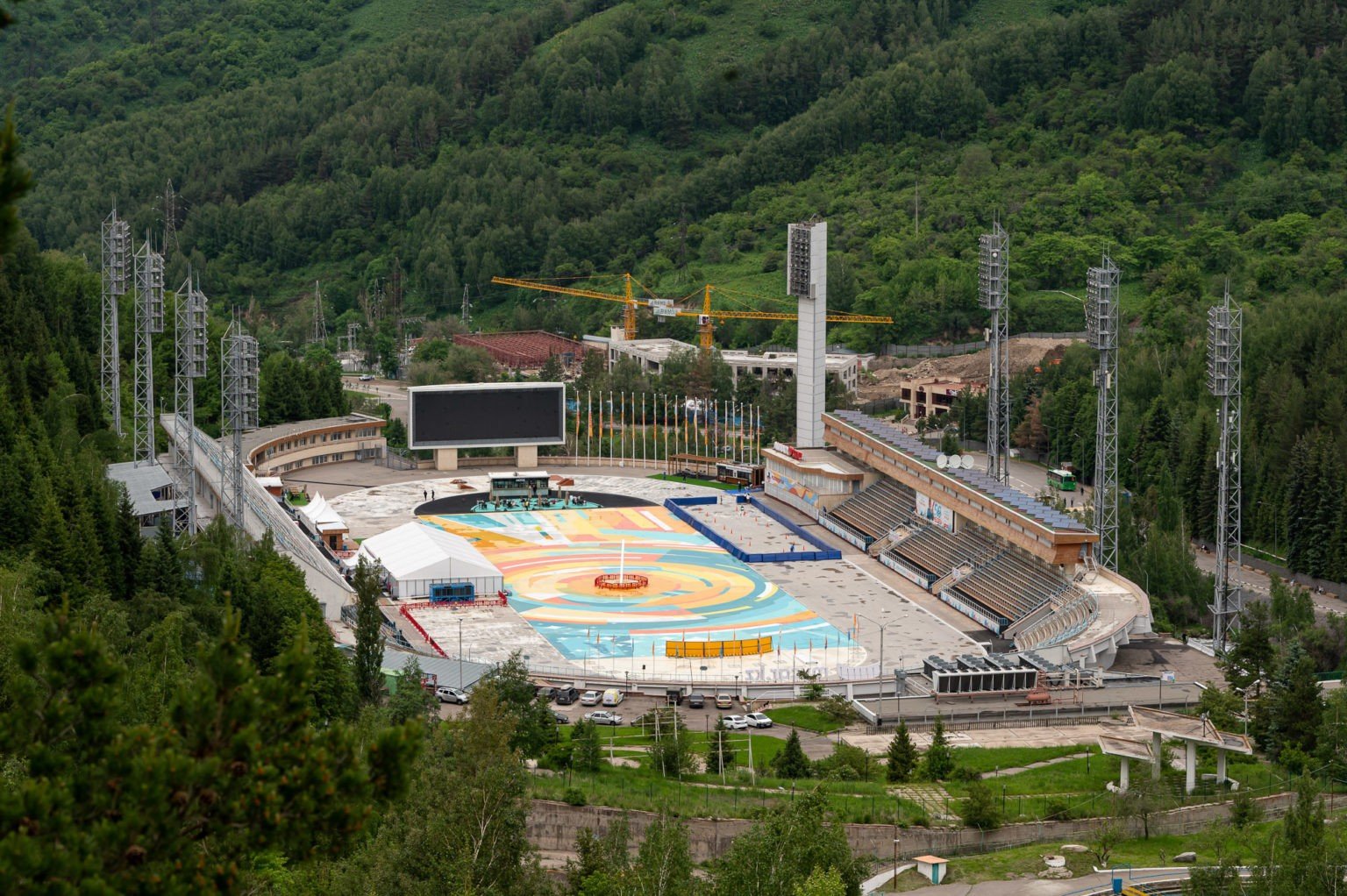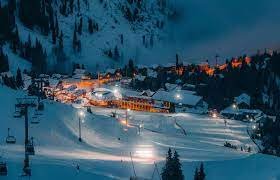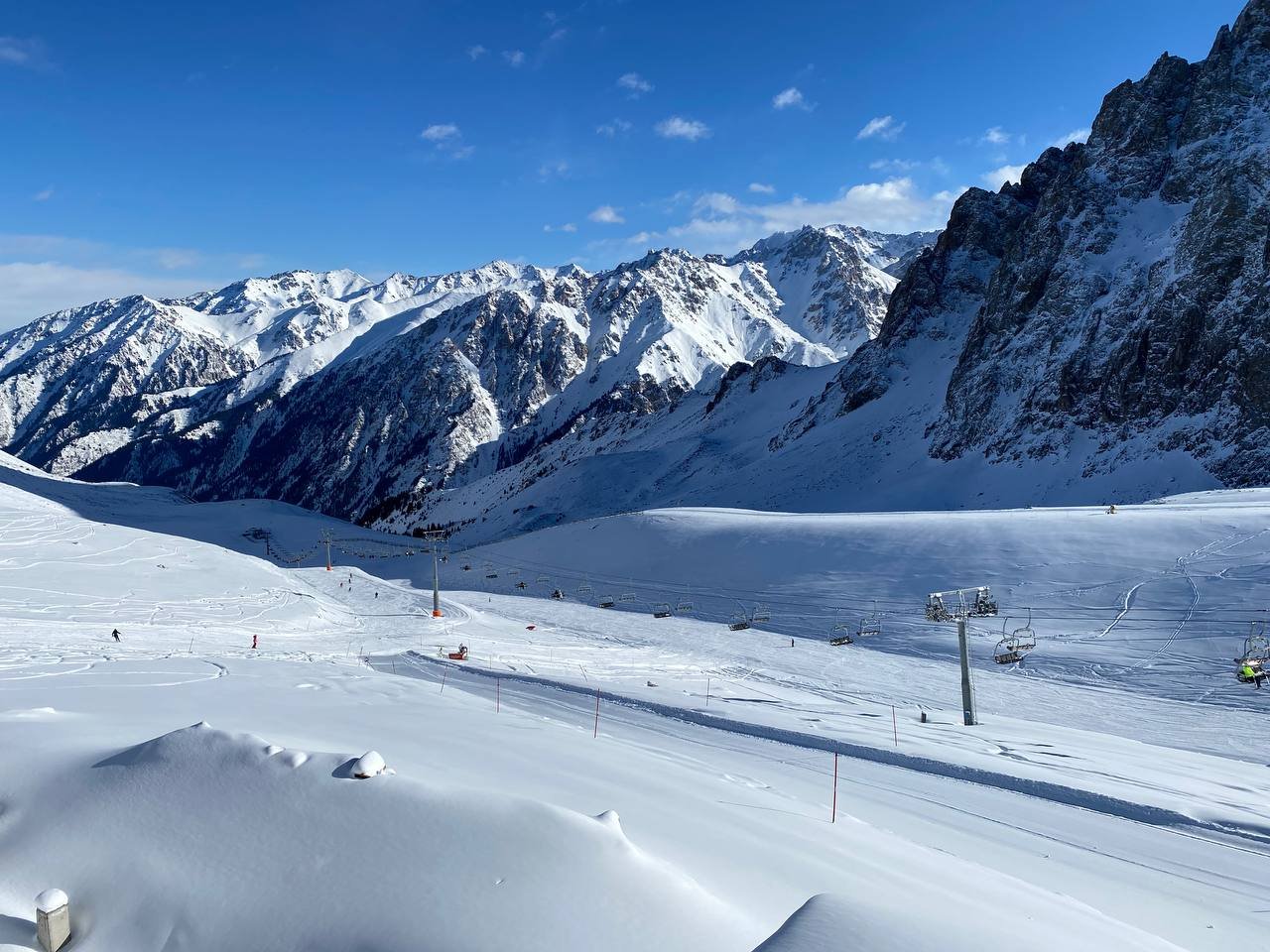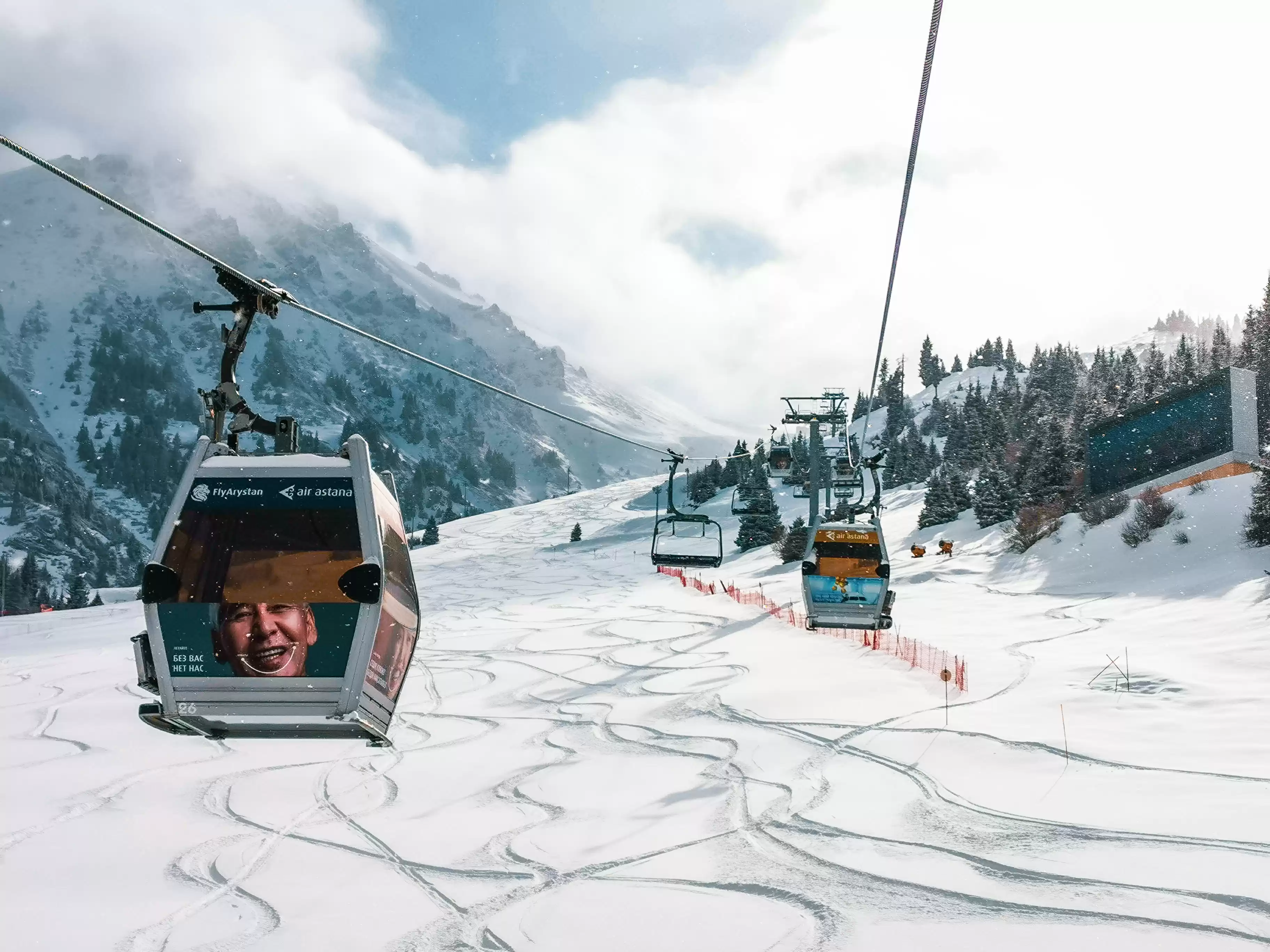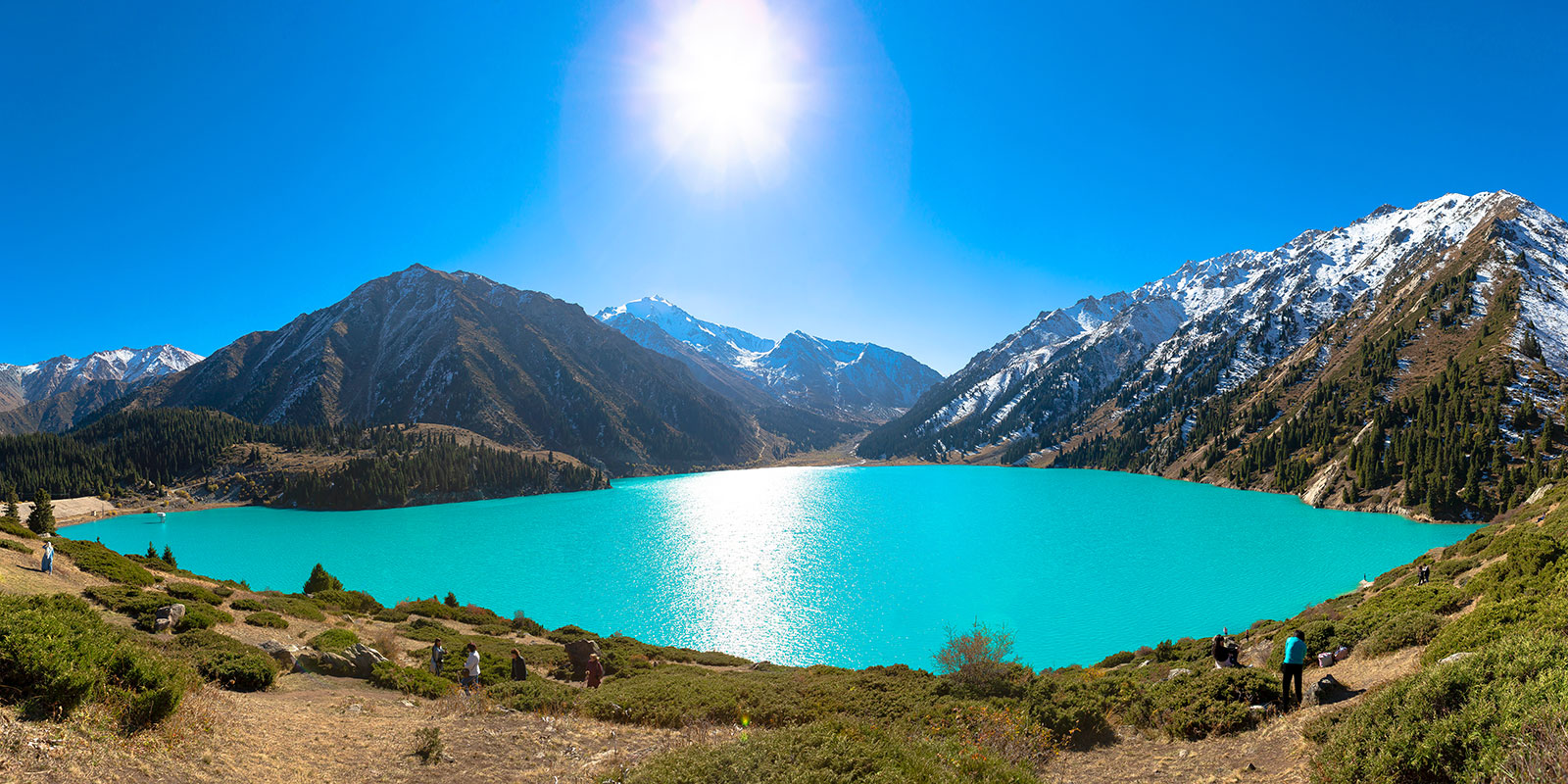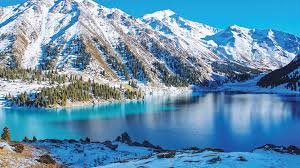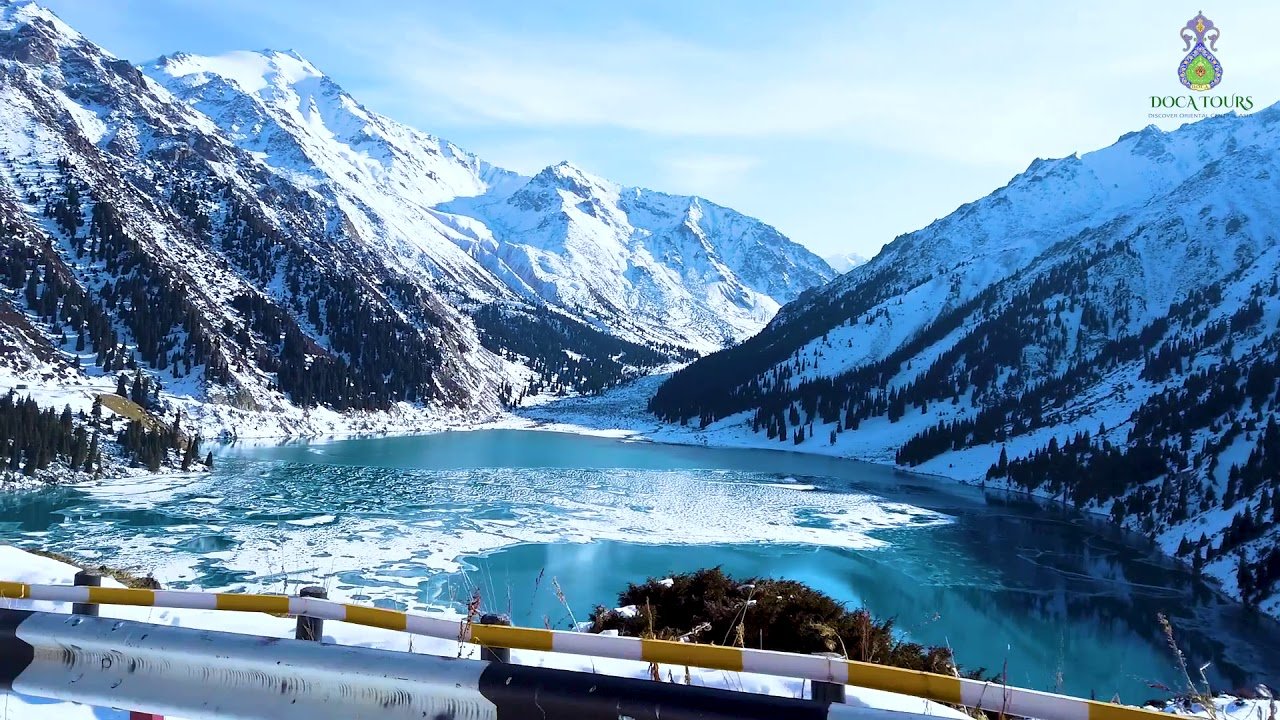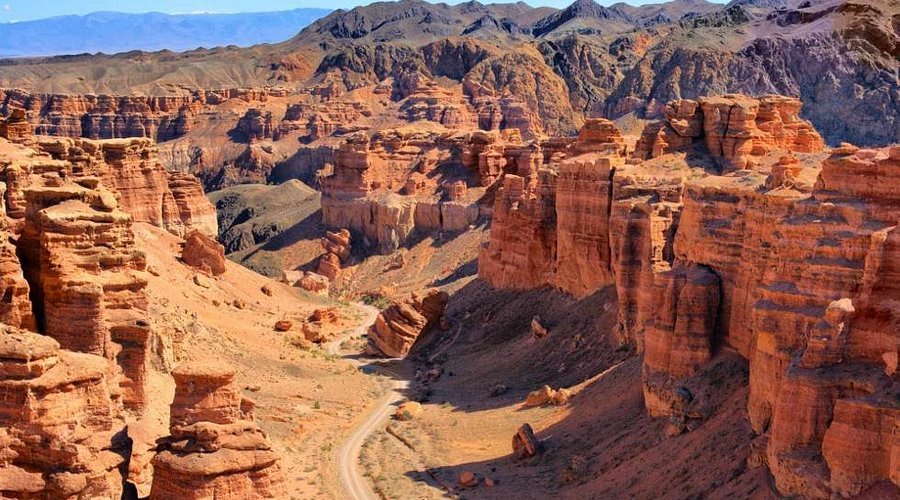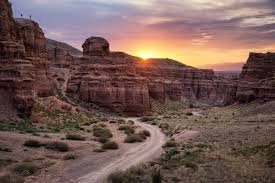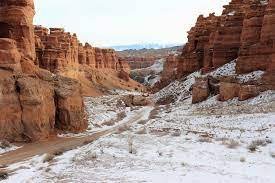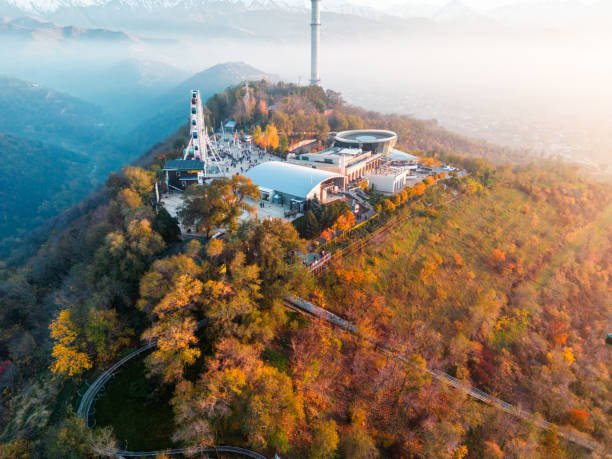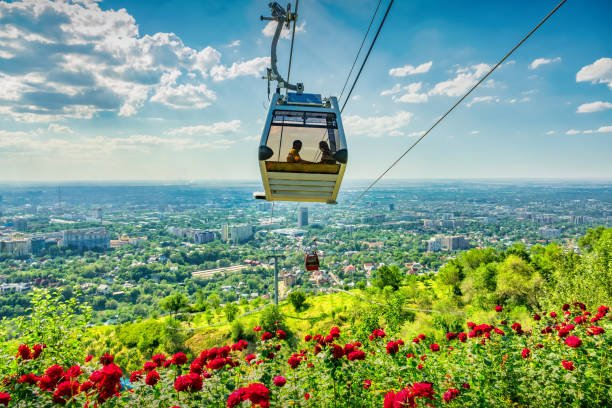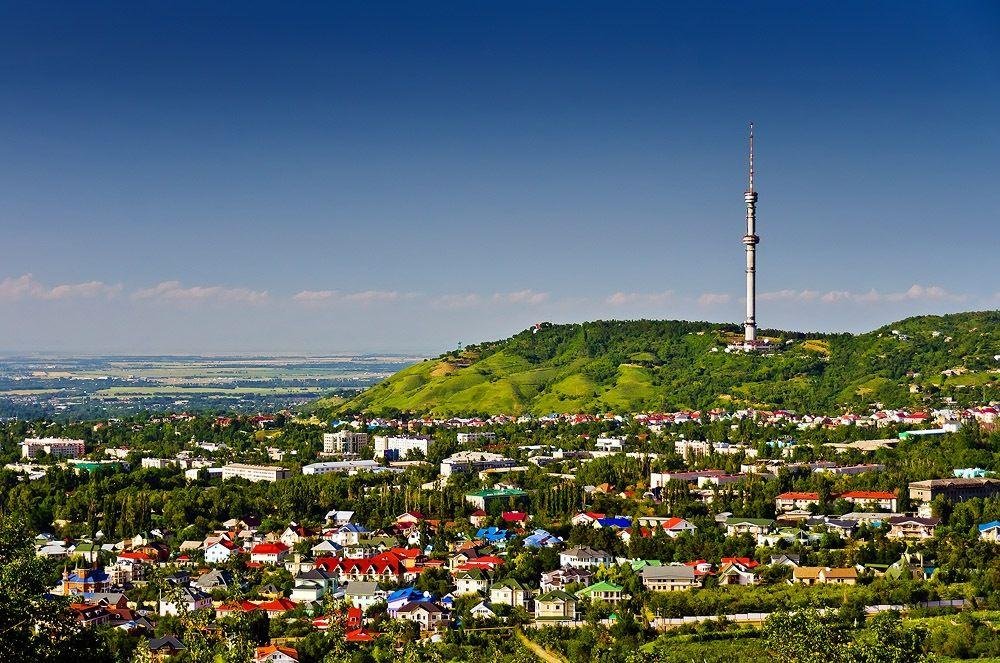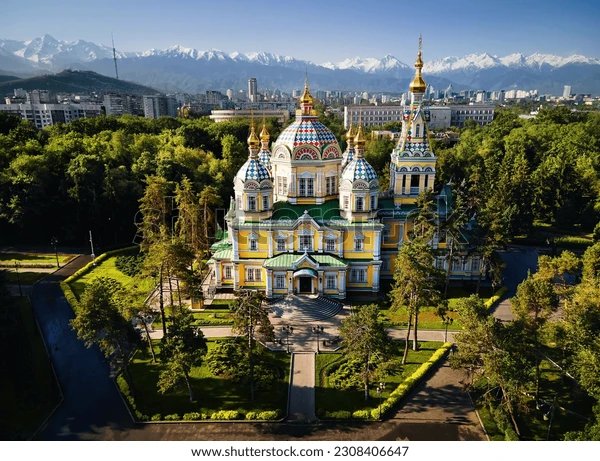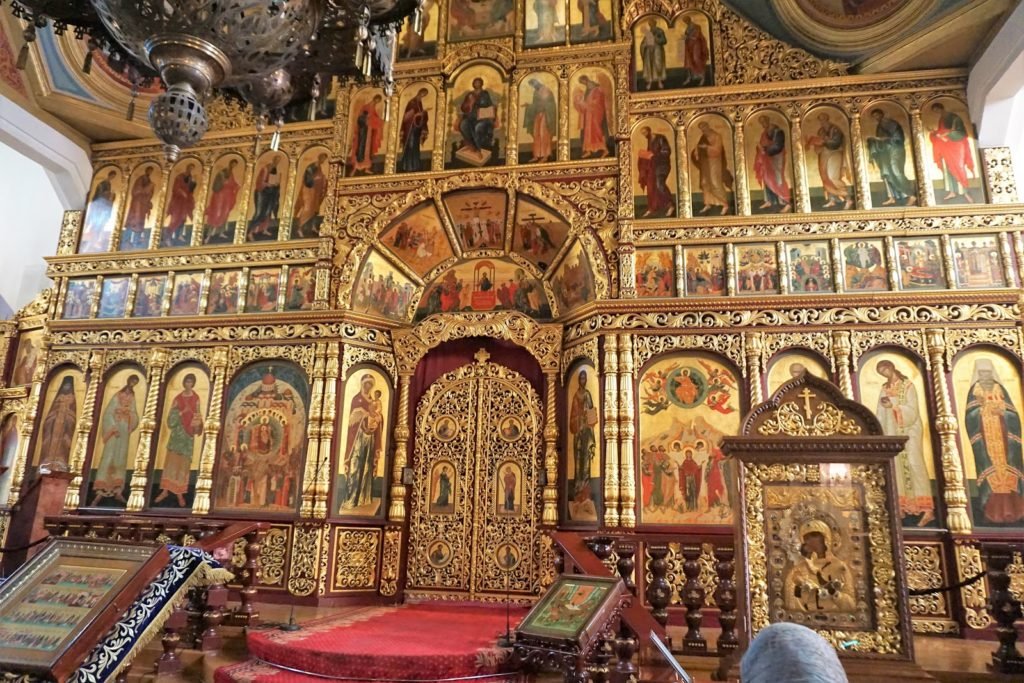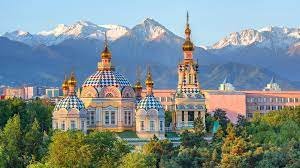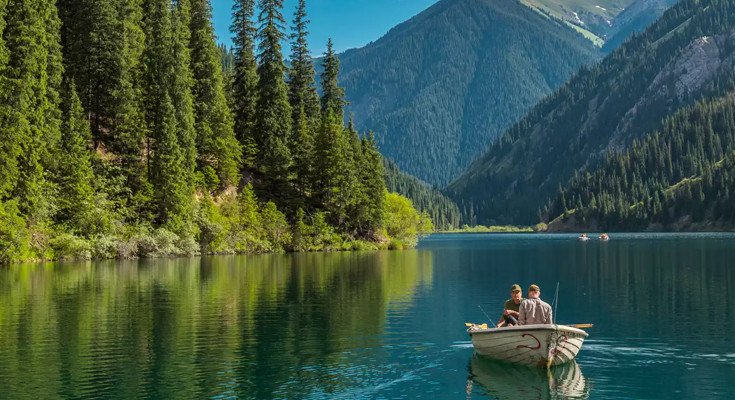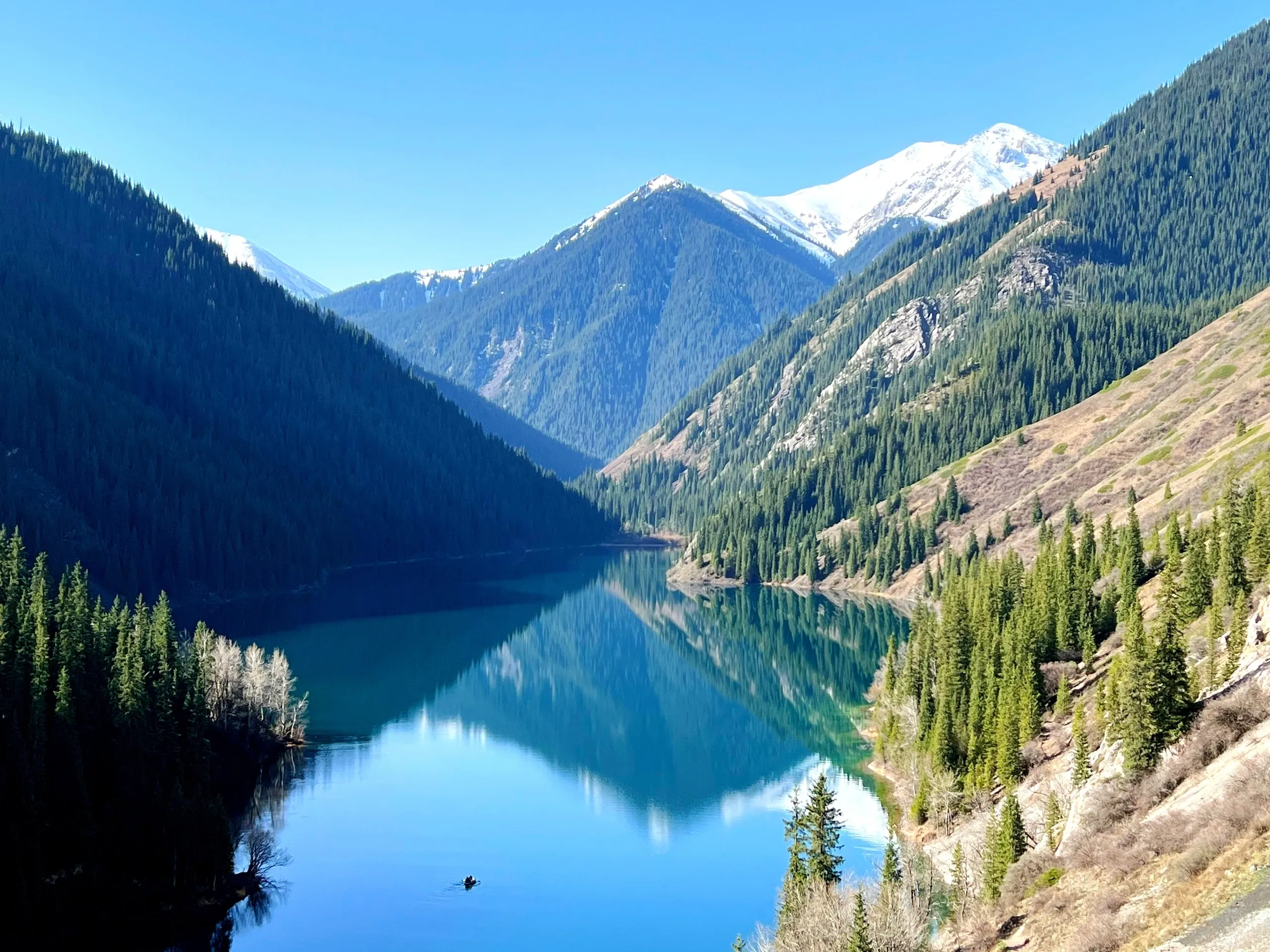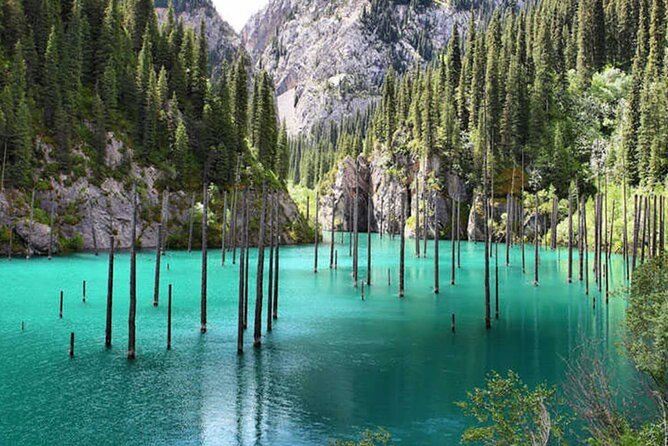Exploring Almaty, Kazakhstan: The Ultimate Tourist Guide
Introduction: Discover Almaty's Charm
Almaty, the former capital and the largest city of Kazakhstan, is a vibrant cultural center set against the dramatic backdrop of the Tien Shan mountains. Known for its blend of modern life and natural beauty, Almaty offers travelers a diverse range of experiences—from alpine resorts and stunning lakes to historical landmarks and rich cultural heritage. This guide will walk you through the must-visit destinations around Almaty, ideal for any traveler seeking adventure, culture, and unforgettable scenery.
Why Choose Almaty for Your Next Adventure?
Almaty offers a perfect blend of natural beauty, cultural richness, and modern amenities that make it an ideal destination for travelers seeking something different. Here's why you should consider Almaty for your next trip:
- Natural Splendor: Set against the majestic Tien Shan mountains, Almaty provides easy access to breathtaking alpine landscapes, pristine lakes, and dramatic canyons.
- Cultural Crossroads: Experience the fascinating blend of Soviet heritage, Kazakh traditions, and modern influences that create Almaty's unique cultural identity.
- Four-Season Destination: Whether it's skiing in winter, hiking in summer, or enjoying the colorful foliage in autumn, Almaty offers year-round attractions for every type of traveler.
- Culinary Delights: Savor the rich flavors of Central Asian cuisine, from hearty meat dishes to delicate pastries, all influenced by the region's nomadic heritage and diverse cultural connections.
- Affordable Luxury: Enjoy high-quality accommodations, dining, and activities at prices that are often more reasonable than comparable experiences in Western destinations.
Must-Visit Destinations Around Almaty
1. Medeu Skating Rink & Dam
Medeu stands out as the world's highest ice skating rink, majestically situated at 1,691 meters above sea level in a picturesque mountain valley. This iconic venue has been a symbol of Almaty since its construction in 1972 and covers an impressive 10,500 square meters of pristine ice. The rink's unique location provides natural ice of exceptional quality, created without artificial cooling systems thanks to the mountain climate.
The complex includes not just the skating rink but also the impressive Medeu Dam, a 107-meter-high structure built to protect Almaty from devastating mudflows from the mountains. Visitors can climb the 842 steps to the top of the dam for breathtaking panoramic views of the surrounding Zailiyskiy Alatau mountains and the city of Almaty below.
In winter (typically October to May), Medeu transforms into a winter wonderland where both professional athletes and casual skaters glide across the ice under the open sky. During summer months, the area becomes a popular starting point for hikers exploring the mountain trails, with the rink area often hosting outdoor events and festivals. The complex includes several cafes and restaurants where visitors can warm up with traditional Kazakh tea or enjoy local cuisine while taking in the alpine scenery.
Why Visit:
- Experience skating at the world's highest ice rink with spectacular mountain views
- Enjoy the fresh mountain air and peaceful surroundings
- Use it as a starting point for hiking trails in warmer months
- Visit the impressive dam structure that protects Almaty from mudflows
Travel time from Almaty city center: Approximately 30 minutes by car (15 km).
Fun Fact: Medeu has hosted numerous world speed skating records, thanks to its high altitude and pure ice conditions.
2. Shymbulak Ski Resort
Nestled in the picturesque Zailiyskiy Alatau mountains just 25 kilometers from Almaty's city center, Shymbulak (also spelled Chimbulak) stands as Central Asia's premier alpine ski resort. Located at an elevation ranging from 2,260 to 3,450 meters above sea level, this world-class destination offers a remarkable combination of excellent snow conditions, modern infrastructure, and breathtaking mountain scenery that rivals European ski resorts.
The resort boasts over 20 kilometers of meticulously groomed ski runs spread across varied terrain suitable for all skill levels—from gentle slopes for beginners to challenging black diamond runs for advanced skiers and snowboarders. The longest run stretches an impressive 3,640 meters, providing an exhilarating descent through stunning alpine landscapes. Shymbulak's modern infrastructure includes 5 high-speed chairlifts and gondolas capable of transporting up to 2,500 people per hour, minimizing wait times even during peak season.
The ski season typically runs from November to April, with reliable snowfall and over 300 sunny days per year creating ideal skiing conditions. The resort offers comprehensive facilities including equipment rental shops stocked with high-quality gear, professional ski and snowboard schools with multilingual instructors, and a dedicated children's area for young learners. Beyond winter sports, Shymbulak transforms into an adventure playground during summer months (May to October), offering mountain biking trails, hiking routes, paragliding opportunities, and a scenic cable car ride that provides spectacular panoramic views of the surrounding mountains and valleys.
After an active day on the slopes, visitors can unwind at one of the resort's many restaurants and cafés, ranging from casual eateries serving local Kazakh specialties to upscale dining venues with international cuisine. The resort area also features several hotels and chalets for those wishing to extend their mountain experience with an overnight stay, allowing guests to wake up to pristine mountain vistas and be first on the slopes.
Why Visit:
- Experience world-class skiing and snowboarding in winter
- Take the cable car for stunning panoramic views of the mountains
- Enjoy hiking and mountain biking trails in summer
- Dine at restaurants with spectacular mountain vistas
Travel time from Almaty: Around 40 minutes by car (25 km).
Fun Fact: Shymbulak's ski season typically lasts from November until early April, with some slopes reaching 3,200 meters elevation.
3. Big Almaty Lake (Bolshoe Almatinskoye Ozero)
Nestled high in the Trans-Ili Alatau mountains at an elevation of 2,511 meters above sea level, Big Almaty Lake (Bolshoe Almatinskoye Ozero) is one of Kazakhstan's most spectacular natural wonders. This alpine lake, located just 28 kilometers south of Almaty within the protected Ile-Alatau National Park, captivates visitors with its otherworldly turquoise-blue waters that seem to glow against the backdrop of snow-capped peaks. The lake's extraordinary color results from the unique mineral composition of the glacial meltwater that feeds it, creating a mesmerizing visual spectacle that changes throughout the day and across seasons.
The lake is surrounded by three imposing mountains—Sovetov Peak (4,317m) to the south, Ozernaya Peak (4,110m) to the southwest, and Tourist Peak (3,954m) to the southeast—creating a natural amphitheater that enhances the lake's ethereal beauty. This high-mountain reservoir serves as an important water source for Almaty city and is part of a sensitive ecosystem, which is why access to certain areas around the lake is regulated to preserve its pristine condition.
Visitors can explore several well-marked hiking trails of varying difficulty that wind through alpine meadows, coniferous forests, and rocky terrain surrounding the lake. The area is rich in biodiversity, providing opportunities to spot native wildlife including marmots, mountain goats, and numerous bird species. For astronomy enthusiasts, the nearby Big Almaty Peak houses the Tien-Shan Astronomical Observatory, one of the highest observatories in the world, which occasionally offers guided tours by prior arrangement.
The journey to Big Almaty Lake is an adventure in itself, with a winding mountain road offering increasingly spectacular views as you ascend. While the lake is accessible year-round, each season offers a unique experience: spring brings wildflowers carpeting the surrounding slopes, summer offers ideal hiking conditions, autumn transforms the landscape with golden hues, and winter blankets the area in pristine snow, though road access may be limited during heavy snowfall.
Why Visit:
- Witness the lake's striking turquoise-blue waters that change color with the seasons
- Capture spectacular photos of the mountains reflected in the crystal-clear water
- Explore hiking trails around the lake with varying difficulty levels
- Experience the tranquility of untouched nature just outside the city
Travel time from Almaty: Approximately 1 hour by car (28 km).
Fun Fact: The lake serves as a natural water reservoir and provides drinking water to the city of Almaty.
4. Charyn Canyon
Often referred to as Kazakhstan's Grand Canyon, the magnificent Charyn Canyon is a geological marvel carved by the Charyn River over millions of years. Located approximately 215 kilometers east of Almaty in the Charyn National Park, this natural wonder stretches for an impressive 154 kilometers, featuring dramatic gorges reaching depths of up to 300 meters. The canyon's most celebrated section, the Valley of Castles (Dolina Zamkov), showcases extraordinary red sandstone formations sculpted by wind and water into shapes resembling ancient fortresses, towers, and mythical creatures.
The canyon's distinctive red-orange hues result from sedimentary deposits dating back 12 million years to the Paleogene period. This spectacular landscape features five distinct canyons, each with unique characteristics: the Valley of Castles, Temirlik Canyon, Yellow Canyon, Red Canyon, and Bestamak Canyon. The diverse ecosystem within these canyons supports over 1,500 plant species, including the rare Sogdian ash trees (Fraxinus sogdiana) that have survived since the Ice Age in a small grove known as "Ash Tree Grove" near the Charyn River.
Visitors can explore the canyon through several well-maintained hiking trails of varying difficulty, with the most popular route being the 3-kilometer path through the Valley of Castles. For adventure seekers, the canyon offers opportunities for rafting on the Charyn River during spring when water levels are optimal. The area also features designated camping zones where travelers can experience the magic of spending a night under the star-filled desert sky, with the canyon walls creating a natural amphitheater that amplifies the sounds of nature.
The canyon's microclimate creates dramatic temperature variations between day and night, with hot desert-like conditions during summer days cooling significantly after sunset. For photographers, the canyon offers spectacular lighting conditions, particularly during the golden hours of early morning and late afternoon when the red rock formations seem to glow with an otherworldly intensity. While the canyon can be visited year-round, spring (April-May) and autumn (September-October) offer the most comfortable temperatures for exploration.
Why Visit:
- Explore the dramatic Valley of Castles with its unique rock formations
- Hike through the canyon and discover its hidden corners
- Experience the stark contrast between the mountain landscapes and desert terrain
- Enjoy camping opportunities with spectacular stargazing
Travel time from Almaty: About 3 hours by car (200 km).
Fun Fact: This dramatic canyon formed over 12 million years ago and is a top destination for photographers and adventure tourists.
Arihant Travel Tip:
When visiting Charyn Canyon, consider joining a guided tour that includes transportation. The drive is long, and local guides can take you to the best viewpoints and explain the geological significance of this natural wonder. Don't forget to bring plenty of water, sun protection, and comfortable walking shoes.
5. Kok Tobe Hill
Rising 1,100 meters above sea level on the southeastern edge of Almaty, Kok Tobe (meaning "Green Hill" in Kazakh) stands as the city's most beloved recreational landmark and highest point. This verdant hill offers visitors the most spectacular panoramic views of Almaty's urban landscape set against the majestic backdrop of the snow-capped Tien Shan mountains. The hill has been transformed into a comprehensive entertainment complex that seamlessly blends natural beauty with modern attractions, making it a must-visit destination for travelers of all ages.
The journey to Kok Tobe is an experience in itself, with visitors having the option to take the iconic Kok Tobe cable car from Dostyk Avenue near the Hotel Kazakhstan. This scenic 6-minute aerial tramway ride covers a distance of 1,620 meters, gradually ascending above the city and offering breathtaking views along the way. Alternatively, visitors can reach the summit by taxi or private vehicle via a winding road that climbs through forested slopes.
At the summit, the centerpiece of Kok Tobe is the 372-meter-tall TV and radio tower, a distinctive landmark visible from throughout Almaty. The hilltop complex features a diverse array of attractions including a family-friendly amusement park with a Ferris wheel and other rides, a mini-zoo housing various animals and birds, souvenir shops selling traditional Kazakh handicrafts, and several restaurants and cafés offering both local and international cuisine with panoramic terraces.
Art enthusiasts will appreciate the famous bronze statue of The Beatles, one of only a few monuments to the legendary band in the world, which has become a popular photo spot. The hill also features several viewing platforms strategically positioned to capture the best vistas of the city, particularly spectacular at sunset when the city lights begin to twinkle below and during clear winter days when the mountain backdrop is at its most dramatic. Throughout the year, Kok Tobe hosts various cultural events, concerts, and seasonal festivities, adding to its appeal as a cultural hub as well as a scenic overlook.
Why Visit:
- Enjoy spectacular panoramic views of Almaty and the surrounding mountains
- Take the scenic cable car ride from the city center
- Visit family-friendly attractions including the small amusement park
- Dine at restaurants with city views
Travel time from Almaty city center: 15 minutes by car or about 30 minutes via cable car.
Fun Fact: Kok Tobe is also a cultural hub, hosting festivals and open-air concerts during summer.
6. Zenkov Cathedral (Ascension Cathedral)
Standing majestically in the heart of Panfilov Park, the Zenkov Cathedral (officially known as the Ascension Cathedral) represents one of the world's most extraordinary architectural achievements. Completed in 1907, this Russian Orthodox cathedral stands as the second tallest wooden building in the world and is widely considered to be the most impressive example of tsarist-era architecture in Central Asia. What makes this structure truly remarkable is that it was constructed entirely of Tien Shan spruce wood without using a single metal nail—an engineering feat that has allowed it to withstand numerous earthquakes, including Almaty's devastating 1911 tremor that destroyed many brick buildings in the city.
The cathedral's design, created by architect Andrei Zenkov (after whom it is commonly named), employs an innovative anti-seismic construction system that allows the building to flex during earthquakes rather than crack or collapse. Rising to a height of 56 meters with its golden crosses, the cathedral features five distinct domes and a bell tower. Its exterior is adorned with vibrant colors—primarily yellow with green, blue, and gold accents—creating a striking visual presence against the backdrop of the surrounding park and distant mountains.
The interior of the cathedral is equally impressive, featuring a richly decorated iconostasis (a wall of icons and religious paintings separating the nave from the sanctuary), intricate woodcarvings, and beautiful stained glass windows that filter light into the sacred space. During the Soviet era, the cathedral was repurposed as a museum and concert hall, with its religious functions suspended. However, following Kazakhstan's independence, it was returned to the Russian Orthodox Church and underwent careful restoration to preserve its historical and architectural significance.
Today, the cathedral functions as both an active place of worship and a cultural monument. Visitors can attend Orthodox services or simply admire the architectural wonder during designated visiting hours. The surrounding Panfilov Park, with its memorials, sculptures, and tree-lined pathways, complements the cathedral beautifully, creating a peaceful urban oasis in the center of Almaty. The park and cathedral together form an essential cultural and historical complex that provides insight into Kazakhstan's diverse religious and architectural heritage.
Why Visit:
- Marvel at the unique wooden architecture built without nails
- Admire the colorful exterior and ornate interior designs
- Learn about the cathedral's remarkable history surviving major earthquakes
- Explore the peaceful surroundings of Panfilov Park
Travel time from Almaty: Located centrally in the city park – about a 10-minute walk from main city squares.
Fun Fact: It is considered one of the tallest wooden buildings in the world and a rare example of Russian Orthodox architecture.
7. Central State Museum of Kazakhstan
Established in 1931 and housed in a distinctive blue-domed building in the heart of Almaty, the Central State Museum of Kazakhstan stands as the country's largest and most comprehensive museum. With an impressive collection of over 300,000 artifacts spread across seven spacious exhibition halls covering 7,000 square meters, this cultural institution offers visitors an unparalleled journey through Kazakhstan's rich and diverse history from prehistoric times to the present day.
The museum's crown jewel is undoubtedly the replica of the famous "Golden Man" (Altyn Adam), a 3rd-2nd century BCE Scythian-Saka warrior discovered in the Issyk burial mound near Almaty in 1969. This remarkable archaeological find consists of a young warrior's costume adorned with over 4,000 intricate gold ornaments and has become a national symbol of Kazakhstan. While the original artifacts are preserved in the national treasury, the museum's detailed replica and accompanying exhibits provide fascinating insights into the sophisticated craftsmanship and cultural significance of this extraordinary discovery.
Beyond the Golden Man, the museum's chronologically arranged halls guide visitors through Kazakhstan's multilayered history. The paleontology and archaeology sections display ancient tools, rock art, and fossils dating back millions of years, including remains of prehistoric animals that once roamed the Kazakh steppe. The ethnography hall showcases the rich material culture of Kazakh nomadic life through traditional yurts, clothing, jewelry, household items, and musical instruments, offering a window into the customs and daily life of the region's nomadic peoples.
Later periods of history are equally well represented, with extensive exhibits covering the Silk Road era, the Kazakh Khanate, Russian Imperial rule, the Soviet period, and finally, independent Kazakhstan. The museum employs modern display techniques including dioramas, interactive elements, and multimedia presentations to enhance the visitor experience. Informative placards in multiple languages, including English, make the exhibits accessible to international visitors. For those seeking a deeper understanding of Kazakhstan's cultural heritage and historical development, the Central State Museum provides an essential educational experience that contextualizes the nation's past and its journey to modern statehood.
Why Visit:
- Discover the famous "Golden Man" artifact and other archaeological treasures
- Learn about Kazakhstan's nomadic heritage and cultural development
- Explore exhibits covering prehistoric times through the Soviet era to independence
- Understand the rich ethnic diversity of Kazakhstan
Travel time from Almaty: Roughly 10 minutes by car or a short walk from Republic Square (city center).
Fun Fact: The museum contains over 300,000 items across multiple halls, making it one of Central Asia's largest museums.
8. Almaty Central Park (Park of the First President)
Established in 1856 as the Kazan Military Garden and evolving through various incarnations, Almaty Central Park (officially renamed the Park of the First President in honor of Nursultan Nazarbayev) stands as a verdant 42-hectare sanctuary in the heart of Kazakhstan's largest city. This historic green space has witnessed the transformation of Almaty from a Russian military outpost to a modern metropolis while remaining a beloved recreational hub for generations of residents and visitors alike.
The park's thoughtfully designed landscape features a harmonious blend of natural and architectural elements, including meticulously maintained flower gardens, tree-lined promenades, ornamental ponds, and decorative fountains. The central alley, flanked by mature trees providing welcome shade during summer months, leads visitors through the park's various recreational zones. The park's plant life is diverse, with over 1,500 tree species creating a microclimate that offers respite from urban heat and serves as a natural air purifier for the surrounding city.
For visitors seeking active recreation, the park offers numerous amenities including sports fields, tennis courts, cycling paths, and fitness areas equipped with outdoor exercise equipment. Families with children particularly appreciate the park's extensive playground facilities featuring modern play structures, a small amusement park with rides including a Ferris wheel offering panoramic views of the surrounding mountains, and a children's railway that has delighted young visitors since the Soviet era.
Throughout the year, the park serves as a cultural venue hosting seasonal festivals, open-air concerts, art exhibitions, and public celebrations that showcase Kazakhstan's rich cultural heritage. During summer evenings, the illuminated fountains create a magical atmosphere, while spring brings spectacular cherry blossoms and autumn transforms the park into a canvas of golden and crimson foliage. In winter, parts of the park become a wonderland with ice skating opportunities and snow-covered landscapes. For travelers seeking to experience local life in Almaty, the Central Park offers an authentic glimpse into how residents enjoy leisure time while providing a peaceful retreat from urban exploration.
Why Visit:
- Enjoy a peaceful retreat from the bustling city
- Experience local life as Almaty residents gather for recreation
- Visit the various gardens, fountains, and recreational areas
- Attend seasonal cultural events and performances
Travel time from Almaty: 10 minutes by car from city center.
Fun Fact: Established in 1856, it remains one of the oldest and most cherished parks in Central Asia.
Additional Day Trips from Almaty
While Almaty itself offers plenty to explore, the surrounding region is filled with natural wonders worth a day trip. Here are some exceptional destinations within a few hours' drive:
1. Kolsai Lakes
Nestled within the northern slopes of the majestic Tien Shan mountain range, approximately 300 kilometers east of Almaty, the Kolsai Lakes system represents one of Kazakhstan's most breathtaking natural treasures. Often referred to as the "Pearls of Tien Shan" or "Blue Necklace of Northern Tien Shan," this enchanting cascade of three alpine lakes sits at elevations ranging from 1,800 to 2,850 meters above sea level, connected by mountain streams that flow through pristine coniferous forests and lush meadows.
Each of the three lakes possesses its own distinct character and charm. Kolsai Lake 1, the lowest and most accessible at 1,818 meters, stretches for 1.6 kilometers surrounded by dense spruce forests and offers facilities for visitors including accommodations and boat rentals. Kolsai Lake 2, located at 2,252 meters and requiring a moderate 5-6 hour hike from the first lake, is often considered the most beautiful with its deep turquoise waters framed by wildflower meadows during summer months. The highest and most remote, Kolsai Lake 3 at 2,850 meters, rewards adventurous hikers with pristine wilderness views and the feeling of having discovered a hidden gem far from civilization.
The lakes' extraordinary clarity and vibrant blue-green hues result from their glacial origins and mineral composition, creating mirror-like surfaces that perfectly reflect the surrounding mountains, forests, and sky. This remarkable ecosystem supports diverse wildlife including brown bears, lynx, wolves, deer, and numerous bird species, though encounters are rare due to the animals' elusive nature. The area's biodiversity is protected as part of the Kolsai Lakes National Park, established in 2007 to preserve this unique mountain ecosystem.
For travelers, the Kolsai Lakes offer a perfect blend of adventure and tranquility. Well-maintained hiking trails connect the three lakes, with the full journey from the lowest to the highest lake typically taking two days with an overnight stay. Local Kazakh families in the nearby village of Saty offer authentic homestay experiences, providing traditional meals featuring fresh dairy products, locally grown produce, and the opportunity to experience nomadic hospitality. Horseback riding excursions are popular, allowing visitors to explore the surrounding valleys and meadows in the traditional manner of Kazakh nomads. The best time to visit is between May and September when the weather is mild and the mountain flora is in full bloom, though each season transforms the landscape in unique and captivating ways.
Why Visit:
- Hike between the three lakes on well-marked trails
- Stay overnight in local guesthouses for an authentic experience
- Go horseback riding through the pristine wilderness
- Enjoy fishing in the crystal-clear waters (permit required)
Travel time from Almaty: 4-5 hours by car (300 km).
Fun Fact: The lakes are situated at different altitudes, with the highest lake at 2,850 meters above sea level.
2. Tamgaly Tas Petroglyphs
Located approximately 170 kilometers northwest of Almaty in a remote semi-desert landscape, Tamgaly Tas ("Painted or Marked Stones" in Kazakh) stands as one of Central Asia's most significant archaeological treasures and a UNESCO World Heritage Site since 2004. This remarkable open-air sanctuary contains over 5,000 petroglyphs (rock carvings) distributed across five main clusters in a compact area, with the oldest dating back to the 14th-13th centuries BCE during the Bronze Age and the most recent created during the medieval period.
The petroglyphs are carved into the smooth surfaces of dark, patinated sandstone rocks within a series of shallow canyons and rocky outcrops. What makes Tamgaly particularly exceptional is not just the quantity of petroglyphs but their outstanding artistic quality, diversity, and cultural significance. The most famous images include distinctive "sun-headed" anthropomorphic figures (believed to represent deities or shamans), warriors on chariots, hunters with bows, dancers performing ritual ceremonies, and a rich variety of wildlife including horses, bulls, camels, deer, wolves, and mythical creatures.
Archaeological evidence suggests that Tamgaly was not merely a gallery of ancient art but a sacred ritual center where Bronze Age communities gathered for ceremonies, sacrifices, and burials. The site includes ancient settlements, burial grounds, altars, and stone enclosures that provide context for understanding the petroglyphs' cultural significance. The strategic positioning of many images in relation to natural features and astronomical alignments indicates sophisticated knowledge of the natural world and possibly early astronomical observations.
For visitors, Tamgaly offers a fascinating window into the spiritual beliefs, social structures, and daily lives of the ancient nomadic peoples who inhabited the Eurasian steppe thousands of years ago. The site is best explored with a knowledgeable guide who can interpret the symbolism and historical context of the petroglyphs. The surrounding landscape of the Chu-Ili mountains provides a dramatic backdrop, with the petroglyphs often positioned to take advantage of natural acoustics and lighting effects at different times of day. Spring (April-May) and autumn (September-October) offer the most comfortable temperatures for exploring this exposed site, while the low-angle light of early morning or late afternoon creates optimal conditions for viewing and photographing the rock art.
Why Visit:
- Explore a UNESCO World Heritage site with ancient rock art
- Learn about the prehistoric cultures of Central Asia
- Enjoy the scenic canyon setting along the Ili River
- Combine with a visit to nearby natural attractions
Travel time from Almaty: About 2.5 hours by car (170 km).
Fun Fact: The name "Tamgaly Tas" means "painted or marked stones" in Kazakh, and some of the petroglyphs date back to the 14th-13th centuries BCE.
Arihant Travel Tip:
For day trips outside Almaty, consider hiring a local guide or joining an organized tour. The roads can be challenging in some areas, and having someone who knows the region will enhance your experience. Many of these natural sites have entrance fees and sometimes require permits, which tour operators can arrange in advance.
Essential Travel Tips for Almaty
To make the most of your Almaty adventure, here are some practical tips to help you plan your trip:
Best Time to Visit
Almaty experiences four distinct seasons, each offering unique experiences and attractions for visitors. Here's a detailed seasonal guide to help you plan your perfect trip:
Spring (April-May)
Spring in Almaty is a season of renewal and natural beauty:
- Weather: Temperatures range from 10-22°C (50-72°F) with occasional rain showers. Mountain areas remain cooler.
- Highlights: The city's famous apple orchards burst into bloom, creating spectacular floral displays throughout parks and surrounding hillsides.
- Festivals: Nauryz (Central Asian New Year) celebrations in late March feature traditional music, dance, and cuisine.
- Activities: Ideal for city exploration, botanical garden visits, and lower-elevation hiking as mountain trails begin to clear of snow.
- Crowds: Moderate, with fewer tourists than summer, offering a more authentic experience.
Summer (June-August)
Summer offers perfect conditions for outdoor adventures:
- Weather: Warm and dry with temperatures between 25-30°C (77-86°F) in the city, cooler in the mountains. July is the hottest month.
- Highlights: Alpine meadows in full bloom, crystal-clear mountain lakes, and perfect conditions for hiking, mountain biking, and paragliding.
- Festivals: Almaty celebrates City Day in September with concerts, street performances, and fireworks.
- Activities: The ideal season for visiting Kolsai Lakes, Big Almaty Lake, Charyn Canyon, and high-altitude treks in the Tien Shan mountains.
- Crowds: Peak tourist season, especially in August. Book accommodations and tours well in advance.
Autumn (September-October)
Many consider autumn the most beautiful season in Almaty:
- Weather: Mild and pleasant with temperatures from 15-25°C (59-77°F), cooling significantly by late October.
- Highlights: Spectacular golden and red foliage transforms the city parks and mountain forests. Clear days offer the best mountain views of the year.
- Harvest: Local markets overflow with fresh apples, grapes, melons, and other produce. Wine regions near Almaty harvest their grapes.
- Activities: Perfect for photography, hiking, cultural exploration, and enjoying the harvest bounty at local restaurants.
- Crowds: Fewer tourists than summer, but still popular with photographers and nature enthusiasts.
Winter (November-March)
Winter transforms Almaty into a winter sports paradise:
- Weather: Cold with temperatures ranging from -5°C to -15°C (23°F to 5°F). Snowfall is common, especially in the mountains.
- Highlights: World-class skiing and snowboarding at Shymbulak Resort, just 30 minutes from the city center. The iconic Medeu outdoor ice skating rink offers a unique experience.
- Festivals: New Year and Orthodox Christmas celebrations bring festive lights and events to the city.
- Activities: Skiing, snowboarding, ice skating, winter hiking with proper equipment, and enjoying the city's excellent museums, theaters, and cozy cafes.
- Crowds: Busy at ski resorts, especially on weekends and holidays, but generally quieter in the city.
Arihant Travel Tip: For the optimal balance of pleasant weather, outdoor activities, and fewer crowds, consider visiting during the "shoulder seasons" of late May to early June or September to early October. These periods offer mild temperatures, good conditions for most activities, and more availability for accommodations and tours.
Getting Around Almaty
Almaty offers a variety of transportation options that make exploring the city and its surroundings convenient and affordable. Here's a comprehensive guide to help you navigate like a local:
Public Transportation
- Metro: Almaty's modern metro system is clean, efficient, and connects major parts of the city. It currently has one line with 9 stations running north-south through the city center. Trains run every 10 minutes from 6:30 AM to 11:30 PM. Tickets cost 80-100 KZT per ride regardless of distance, making it an affordable option. Station announcements and signs are in Kazakh, Russian, and English.
- Buses and Trolleybuses: An extensive network of buses, minibuses, and trolleybuses covers most areas of the city. Routes are numbered and displayed on the front of vehicles. Fares are paid to the conductor or driver (80-150 KZT per ride) or via the Onay card system. Download the 2GIS app for real-time bus schedules and routes.
- Onay Card: This rechargeable transport card works on all public transportation in Almaty. Purchase at metro stations, major bus stops, or dedicated kiosks throughout the city. The card itself costs around 400 KZT and can be topped up as needed.
Taxis and Ride-Sharing
- Ride-Hailing Apps: Yandex.Taxi and InDriver are the most popular ride-hailing services in Almaty. Both apps have English interfaces and allow cashless payment. Rides within the city typically cost between 500-1500 KZT depending on distance and time of day.
- Traditional Taxis: Official taxis have yellow color schemes and meters. However, many local taxis operate informally. Always negotiate the fare before entering an unmarked taxi, and expect to pay around 1000-2000 KZT for trips within the city center.
- Gett Taxi: This international service also operates in Almaty and may be familiar to international travelers.
Car Rental and Driving
- Rental Options: International agencies like Hertz, Avis, and Europcar operate in Almaty, along with local companies offering competitive rates. Expect to pay from $30-70 USD per day depending on the vehicle class.
- Driving Requirements: An International Driving Permit along with your home country's license is required. Traffic moves on the right side of the road.
- Road Conditions: City roads are generally well-maintained, but rural roads can vary in quality. Winter driving requires experience with snow and ice conditions.
- Parking: Paid parking zones exist in the city center, identifiable by blue lines. Payment is made through the Almaty Parking app or at payment terminals.
Other Transportation Options
- Walking: The city center is pedestrian-friendly with wide sidewalks and many parks. Most major attractions in central Almaty are within walking distance of each other.
- Cycling: Almaty has been developing its cycling infrastructure with dedicated lanes in some areas. Bike rentals are available through the Almaty Bike system with stations throughout the city center. The Velocity app can be used to locate and rent bikes.
- Cable Car: The cable car to Kok Tobe Hill offers both transportation and stunning views of the city. Round-trip tickets cost around 2000 KZT.
- Tour Services: For destinations outside the city like Charyn Canyon or Kolsai Lakes, organized tours with transportation included are often the most convenient option. These can be arranged through your hotel or local travel agencies.
Arihant Travel Tip: Download offline maps of Almaty before your trip, as well as the 2GIS app which works exceptionally well in Kazakhstan for navigation and finding public transport routes. For day trips to natural attractions outside the city, consider hiring a driver or joining a tour rather than self-driving, as local knowledge of mountain roads and conditions is valuable.
Local Cuisine
Kazakh cuisine reflects the country's nomadic heritage and diverse cultural influences from Russia, Central Asia, and the Middle East. In Almaty, you'll find everything from traditional nomadic dishes to modern fusion cuisine. Here are some must-try traditional foods:
- Beshbarmak: Kazakhstan's national dish, which literally means "five fingers" as it was traditionally eaten with the hands. It consists of boiled horse or lamb meat served over large, flat noodles and topped with a savory onion sauce called tuzdyk. The dish is often ceremonially served with the meat arranged by significance of cuts, with the most honored guest receiving the sheep's head.
- Kazy: A traditional delicacy of horsemeat sausage made from rib meat and fat stuffed into intestine casings. The sausage is first boiled then often served cold as an appetizer, sliced into thin rounds. The unique flavor profile combines smoky, gamy notes with a rich, slightly sweet finish.
- Laghman: A Dungan and Uyghur influence, this dish features hand-pulled wheat noodles served with a spicy sauce of meat (usually beef or lamb), vegetables, and aromatic herbs. The noodle-pulling technique is an art form, with skilled chefs stretching the dough to create long, elastic strands.
- Baursak: Puffy fried dough pieces that are a staple at every Kazakh table. These golden, pillow-like bread pieces are traditionally prepared for special occasions and everyday meals alike, often served with tea and honey or as an accompaniment to soups.
- Plov (Pilaf): A hearty rice dish cooked with meat (usually lamb), carrots, onions, and spices in a large cast-iron kazan (cooking pot). Each region has its own variation, with Almaty's version typically featuring more vegetables and a less oily preparation than other Central Asian styles.
- Shashlik: Marinated meat skewers grilled over open coals, popular throughout Central Asia. In Kazakhstan, these kebabs are often made with lamb and served with raw onions, fresh herbs, and flatbread.
- Kumys: A traditional fermented mare's milk beverage with a slightly alcoholic content (2-3%). This tangy, effervescent drink has been consumed by nomadic peoples for centuries and is believed to have health benefits. It's an acquired taste for most foreigners but an essential cultural experience.
- Shubat: Similar to kumys but made from camel milk, this fermented drink has a milder flavor and is rich in vitamins and minerals.
Where to Eat in Almaty:
- Navat or Gakku for authentic Kazakh cuisine in traditional settings
- Alasha for Central Asian dishes with folkloric performances
- Kaganat for excellent lagman and Dungan cuisine
- Local bazaars for street food and authentic flavors at budget prices
Practical Information
- Currency: Kazakhstani Tenge (KZT). Major credit cards are accepted in hotels, shopping malls, and upscale restaurants, but it's advisable to carry cash for smaller establishments, markets, and transportation. ATMs are widely available throughout Almaty, particularly in shopping centers and near major banks. Current exchange rates: approximately 450-500 KZT to 1 USD (check current rates before travel).
- Language: Kazakh is the state language, but Russian is widely spoken and serves as the language of inter-ethnic communication. English proficiency varies—it's commonly spoken in international hotels, upscale restaurants, and major tourist attractions, but less so in local establishments and among taxi drivers. Learning a few basic Russian phrases can be extremely helpful.
- Visa Policy: Kazakhstan offers visa-free entry for citizens of many countries for stays of up to 30 days, including those from the EU, UK, USA, UAE, Australia, and many Asian nations. Always verify the latest requirements through official channels or the Kazakh embassy in your country before traveling, as policies may change.
- Transportation: Almaty has an efficient public transportation system including a metro line, buses, and trolleybuses. The metro is clean, modern, and connects major parts of the city. Yandex.Taxi and InDriver apps offer reliable and affordable taxi services with English interfaces. For mountain excursions, consider hiring a driver or joining organized tours as public transport options are limited.
- Safety: Almaty is generally safe for tourists, with low rates of violent crime. Exercise standard precautions regarding personal belongings in crowded areas and tourist spots. The city has a dedicated tourist police force that speaks English and can assist visitors with any issues.
- Weather & Packing: Almaty experiences continental climate with distinct seasons. Summers (June-August) are warm with temperatures of 25-30°C, while winters (December-February) are cold with temperatures ranging from -5°C to -15°C. Spring and autumn are mild but can be unpredictable. Pack accordingly and include layers if visiting during transitional seasons.
- Electricity: Kazakhstan uses 220V with European-style round-pin outlets (types C and F). Travelers from the US and UK may need adapters, though many hotels provide them upon request.
- Internet & Communication: Wi-Fi is readily available in accommodations, cafes, restaurants, and shopping centers. For mobile connectivity, purchasing a local SIM card from providers like Beeline, Kcell, or Tele2 is recommended for affordable data and local calls. SIM cards can be purchased at the airport or at provider stores with your passport.
- Tipping: Not traditionally expected but becoming more common in tourist areas. In upscale restaurants, a 10% tip is appreciated for good service, while rounding up the bill is common in casual establishments. Tipping is not expected for taxis, but rounding up is common practice.
Where to Stay in Almaty
Almaty offers a diverse range of accommodation options to suit every budget and preference, from international luxury chains to boutique hotels and affordable hostels. Here's a guide to help you choose the perfect place to stay:
Luxury Options
- The Ritz-Carlton Almaty: Located in the Esentai Tower with spectacular mountain views, offering world-class amenities including a spa, indoor pool, and fine dining restaurants.
- InterContinental Almaty: Centrally located near Republic Square with elegant rooms, multiple restaurants, and an indoor pool with mountain views.
- Rixos Almaty: A luxury hotel with Turkish influences, featuring spacious rooms, a spa with traditional hammam, and excellent dining options.
Mid-Range Options
- Novotel Almaty City Center: Modern hotel with comfortable rooms, an indoor pool, and convenient city center location.
- Hotel Kazakhstan: An iconic Soviet-era high-rise offering renovated rooms with panoramic city views and a convenient location near Kok Tobe cable car.
- Kazzhol Hotel: Traditional Kazakh-style hotel with comfortable rooms, a spa center, and authentic local cuisine.
- Boutique hotels like Shymbulak Resort Hotel: For those looking to stay in the mountains, offering direct access to skiing in winter and hiking in summer.
Budget-Friendly Options
- Almaty Backpackers Hostel: Popular with international travelers, offering dormitory and private rooms with a social atmosphere.
- Sky Hostel Almaty: Clean, modern hostel with both dormitory and private rooms, located near the city center.
- Apartments for rent: Numerous short-term rental apartments are available through platforms like Airbnb and Booking.com, often providing more space and kitchen facilities at competitive prices.
Best Areas to Stay
- City Center/Almaly District: Ideal for first-time visitors, with easy access to major attractions, restaurants, and shopping.
- Medeu/Shymbulak area: Perfect for nature lovers and those planning to focus on mountain activities.
- Bostandyk District: Upscale area with luxury hotels, shopping malls, and proximity to Almaty's business district.
- Dostyk Avenue: Prestigious area with embassies, upscale restaurants, and easy access to both the city center and mountain areas.
Arihant Travel Tip: Book accommodation well in advance if visiting during peak seasons (summer months and winter ski season), especially if staying near the mountains. For the best rates, consider visiting during the shoulder seasons of spring and autumn when the weather is still pleasant but tourist numbers are lower.
Health & Safety Tips
General Safety
- Almaty is generally safe for tourists with low crime rates compared to many major cities. However, exercise standard precautions as you would in any urban environment.
- Be vigilant in crowded areas like markets, public transportation, and tourist attractions where pickpocketing occasionally occurs.
- Use reputable taxi services like Yandex or InDriver rather than hailing unmarked taxis, especially at night.
- Avoid displaying expensive jewelry, cameras, or electronics conspicuously in public areas.
- The city has a dedicated tourist police force that speaks English. In case of emergency, dial 102 for police or 103 for ambulance services.
Mountain Safety
- Register with your embassy or consulate if planning to hike or trek in remote mountain areas.
- Always check weather forecasts before mountain excursions. Conditions can change rapidly in the Tien Shan mountains.
- Inform your accommodation of your hiking plans, expected return time, and route.
- Consider hiring a local guide for unfamiliar trails, especially in more remote areas like Kolsai Lakes or Charyn Canyon.
- Carry essential safety equipment including a first aid kit, extra water, food, warm clothing (even in summer), and a fully charged mobile phone.
- Be aware that some mountain areas have limited mobile coverage. A satellite phone is recommended for very remote treks.
Health Precautions
- Tap water is not recommended for drinking. Use bottled water, which is widely available and inexpensive.
- Almaty has good medical facilities, but comprehensive travel insurance with evacuation coverage is strongly recommended.
- Bring any prescription medications you need in their original packaging, along with a copy of your prescription.
- Altitude sickness can affect visitors in higher mountain areas. Allow time to acclimatize and stay hydrated when visiting high-altitude locations.
- In summer, protect against sun exposure and heat, particularly when hiking. The mountain sun can be intense even when temperatures are moderate.
- In winter, be aware of extreme cold temperatures, especially at night and in mountain areas.
Documentation & Legal
- Carry a copy of your passport, visa (if applicable), and hotel address. Keep the originals in a secure place like a hotel safe.
- Kazakhstan law requires foreigners to register with migration authorities if staying longer than 5 days. Most hotels handle this automatically, but verify this upon check-in.
- Photography is restricted around government buildings, military installations, and some infrastructure. When in doubt, ask before taking photos.
- Save important contact information including your country's embassy or consulate in Kazakhstan, your hotel, and emergency services.
Arihant Travel Tip: We recommend downloading offline maps of Almaty before your trip and saving emergency phrases in Russian or Kazakh. While Almaty is a safe destination, being prepared enhances your travel experience and provides peace of mind.
Your Almaty Adventure Awaits
As our journey through Almaty comes to a close, it's clear why this magnificent city is often referred to as Central Asia's hidden jewel. Nestled between the majestic Tien Shan mountains and the vast Kazakh steppe, Almaty represents a perfect harmony of natural splendor and urban sophistication that few destinations can match. This former capital of Kazakhstan, with its tree-lined boulevards, cosmopolitan atmosphere, and breathtaking alpine backdrop, offers travelers an extraordinary blend of experiences that remain refreshingly authentic and largely undiscovered by mass tourism.
What truly sets Almaty apart is its remarkable diversity of attractions within such close proximity. In the morning, you might be exploring Soviet-era architecture and world-class museums in the city center; by afternoon, you could be skiing down pristine slopes or hiking through alpine meadows; and by evening, savoring traditional Kazakh cuisine while enjoying the city's emerging nightlife scene. This accessibility to both cultural treasures and natural wonders makes Almaty an ideal destination for travelers seeking depth and variety in their experiences.
Beyond the physical attractions, it's the warmth of Kazakh hospitality and the fascinating cultural mosaic that leaves the most lasting impression. As a crossroads of civilizations for centuries, Almaty embodies a unique blend of nomadic traditions, Soviet influence, and modern cosmopolitanism. The city's multicultural heritage is evident in everything from its diverse culinary scene to its architectural landmarks, creating a destination that feels both exotic and welcoming.
For the adventurous traveler seeking destinations beyond the well-trodden tourist paths, Almaty offers that increasingly rare combination of authenticity, affordability, and accessibility. Whether you're drawn by the call of the mountains, the allure of ancient Silk Road history, or simply the opportunity to experience a culture still relatively unknown to western travelers, Almaty promises memories that will last a lifetime.
As Kazakhstan continues to develop its tourism infrastructure and more travelers discover its charms, now is the perfect time to experience Almaty while it still retains its unspoiled character and sense of discovery. From the moment you arrive until your reluctant departure, this captivating city at the foot of the Tien Shan will surprise, delight, and inspire you in ways few other destinations can.
Ready to Experience the Magic of Almaty?
At Arihant Travel, we specialize in creating unforgettable Central Asian journeys tailored to your unique interests and travel style. Our experienced team includes local experts who can provide insider access to Almaty's hidden gems and authentic experiences beyond the guidebooks.
Whether you're dreaming of a cultural exploration, an adventure-filled mountain escape, a culinary journey, or a perfect blend of all three, our travel specialists will craft a personalized itinerary that brings your Almaty dreams to life. From securing the best accommodations to arranging knowledgeable guides and unique experiences, we handle all the details so you can focus on making memories.
Get in Touch & Connect
Chat With Us
Ready to plan your Dubai adventure? Click below to chat directly with our travel experts.
Chat on WhatsApp